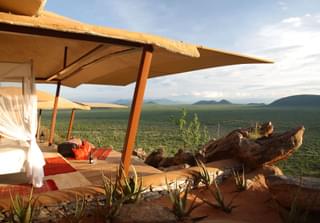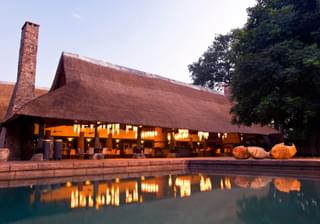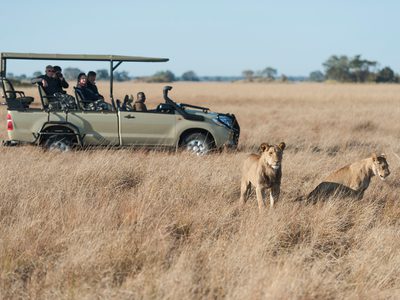
What is a safari?
The name safari derives from the Swahili word for a journey. Although in colonial times, safaris used to be associated with big game being hunted and shot, today, a safari typically includes game viewing and time spent in the wilderness or bush in locations such as Kenya or Tanzania.
Safaris have changed a lot and are now often closely associated with wildlife protection and conservation.
Whilst Africa is definitely the most famous place to head on safari with many people hoping to tick off the ‘Big Five’, it is by no means the only place to go on safari – you might go in search of tigers in India, or for leopards in Sri Lanka for instance. Looking for safari ideas? Check out our 26 favourite safari holidays.
When to go on safari
You’ll be pleased to know if you are planning a safari, that you aren’t limited to going at a particular time of year.
It depends on which country you are planning to visit and if there is a specific animal or wildlife spectacle you are hoping to see. Below is a brief overview but for more details check out our month by month guide on when to go on safari.
January – March
This is a perfect time to catch some winter sun and head to the southern regions of the Serengeti in Tanzania.
The Wildebeest Migration is concentrated in the southern regions and this is calving season when up to 10,000 wildebeest calves are born every day with big cat activity at a premium. It is also a good time to climb Kilimanjaro if you are looking to add this in.
These early months are also the best time of year for game viewing in Botswana’s Kalahari Desert and Makgadikgadi Plains with huge concentrations of zebra and flamingos.
March is a fantastic time to visit Kruger National Park in South Africa as it gives you the tail end of the summer, but without the crowds.
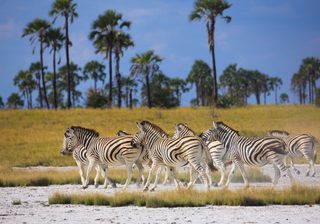
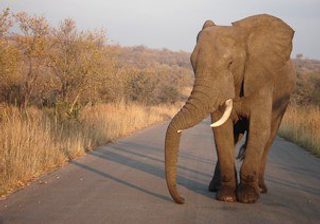
April – June
Victoria Falls, Zimbabwe is at its peak flow, giving a true demonstration of this magnificent and powerful force of nature.
Great wildlife viewing across South Africa and Zimbabwe as the cooler, dry winter season begins and thick vegetation begins to recede meaning better opportunities for seeing wildlife clearly.
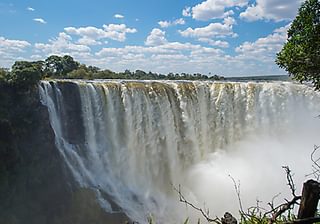
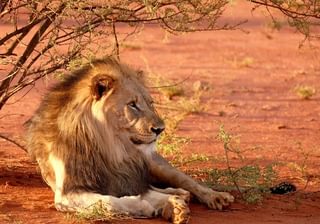
July – September
This season is right at the height of the Great Wildebeest Migration, a phenomenon where millions of wildebeest migrate.
At this time of year, you can see them battle to cross the crocodile infested Mara river. The best place to witness this is in the Northern Serengeti or the Masai Mara.
Wildflowers (fynbos and daisy species) come into a glorious full bloom in South Africa’s Namaqualand region.
Humpback and southern wright wales can be seen off the coast of South Africa as the follow the Sardine Run. The humpback whales are migrating north towards the warm waters of the Indian Ocean to give birth.
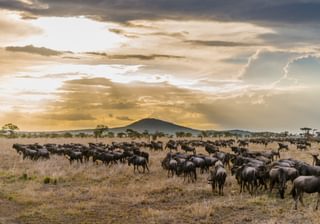
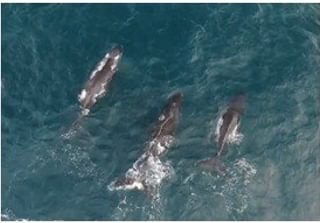
October – December
October – Mountain gorilla trekking in Uganda and Rwanda. The weather is still good, and it is a little cheaper as outside of key season.
November - perfect for travelling to Zimbabwe for a more rustic safari to Hwange and Mana Pools National Parks.
It’s drier at this time of year which means a lot of the wildlife will be congregating towards water sources, meaning you’ll have a superb chance of seeing most of the key species.
Turtle nesting along the Indian Ocean coastline. Towards the end of the year, up and down the eastern coastline of southern Africa, turtles come to shore to nest and lay their eggs.
When you speak with your safari expert, they will be able to tell you where and when to go for you to have the best opportunity to see exactly what you wish.
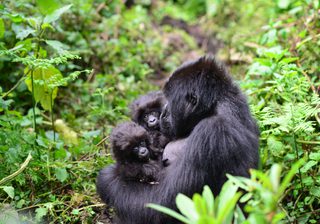
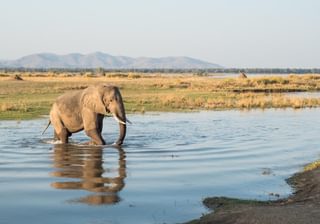
Where to go on safari?
There are so many fantastic countries to visit for a safari that deciding where to go can be overwhelming.
To help you decide where is right for you, we’ve broken it down into our favourite classic safari destinations, destinations which have a lot more to offer than just safari and allow you to have a few days of safari but for it to not necessarily be the main feature of your trip and then those which are more specialist or adventure destinations.
Every trip we create is tailor-made, so if you are not sure where to go on safari, give us a ring and we will discuss the best option for you.
Classic safaris
Kenya
One of the most popular safari destinations in Africa and with good reason. Kenya is home to the world-famous Masai Mara that is famous of the number of big cats it has and the opportunity to see the Big Five.
If you visit between July-September, you also have the chance to witness the Great Wildebeest Migration.
It is easy to combine the Masai Mara with either Samburu, Laikipia or Lewa which offer a different safari landscape and the chance to try a walking or riding safari. As well as an abundance of animals, many visitors enjoy the opportunity to visit a Masai village and see the Masai way of life.
Kenya makes for a great first-time safari destination as it offers comparably good value for money and is easy to combine with a few days on the beach at the end.
Kenya offers a very professional safari experience and there is a big range of accommodation from high end luxury, to more basic accommodation, and they are also well set up for family safaris.
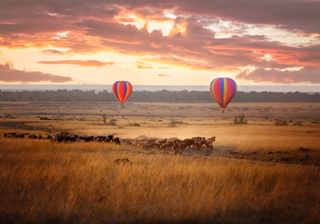
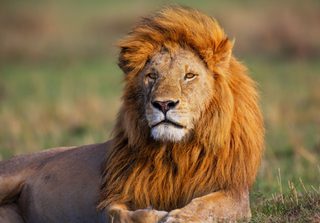
Tanzania
Tanzania is famous for its high concentration of game and the notorious northern circuit includes the Serengeti with its vast plains and the dramatic Ngorongoro Crater, as well as the opportunity to combine this with Mount Kilimanjaro, the highest mountain in Africa. This classic route can be combined with visit the less busy, and less visited wild Selous Reserve.
The majority of the Great Wildebeest Migration happens in Tanzania with the wildebeest moving in a circular movement across the Serengeti throughout the year. Visit in Jan-Feb to see the calving season and in July-September you can see the dramatic crossing of the Mara river.
Zanzibar, famed for its white sand beaches is part of Tanzania, making it the perfect beach stop for a few days’ relaxation at the end of your holiday.
Tanzania without doubt offers some of the best game viewing in Africa attracting both first-time and veteran safari goers.
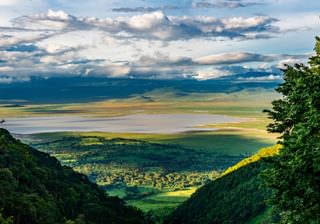

Botswana
For many the pinnacle of safari destinations and certainly an exclusive game-viewing experience.
The government is strict on the impact of tourism, focusing on providing a high quality, low impact experiences rather than allowing large number of visitors. This means that Botswana is often more expensive than some other safari destinations, but it also means you won’t be competing with lots of other vehicles for your game viewing.
Camps and lodges tend to be small and intimate with only a few rooms. Many are of the camps are high-end luxury and you can find some of the best guides in Africa here.
The Okavango Delta is home to one of the world’s largest wetlands and there are many private reserves you can stay in here. The area is prolific with wildlife and it is famous for its water-based safari activities with the opportunity for boating, canoeing and fishing.
In contrast to the watery Okavango Delta, it is worth also visiting the salty expanses of the Makgadikgadi Salt Pans which is famous for the opportunity to get up close to Meerkats.
Botswana if you are looking for a pure safari experience with great variety.
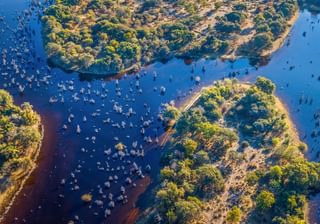
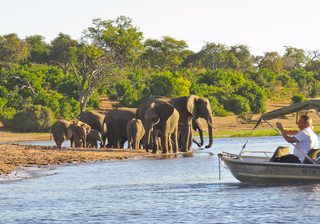
More than safari
South Africa
If you are looking to dip your toe in and try safari then South Africa is a fantastic choice for you, as it is easy to combine safari with a whole host of other activities from visiting Cape Town to wine tasting, driving along the Garden Route or visiting the Drakensberg mountains, South Africa allows safari to become a part of your trip rather than the main focus.
The best know place to undertake safari here is the Kruger National Park which gives you the opportunity to see the Big Five.
It is possible to self-drive here which can be very popular as it allows you to set your own timetable and it also brings the cost down making safari more affordable. The disadvantage is that you do not get the knowledge of a guide.
South Africa is also very popular for family safaris as there are areas that are malaria free.
Like Kenya and Tanzania, South Africa is very well set up for safari and there is a huge range of accommodation available from very luxury to more basic. The food throughout South Africa and wine available tends to be excellent.
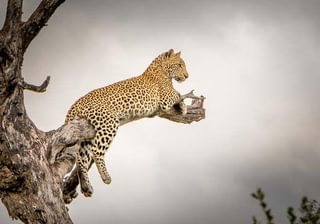
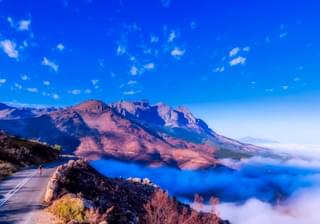
Namibia
Namibia is famed for its stunning scenery, it’s remote, arid deserts and it’s rugged skeleton coast. If you’re keen for adventure, like the idea of self-driving and going off the beaten track, Namibia is a great opportunity to explore one of the least densely populated countries on Earth.
Etosha National Park offers a great diversity of wildlife and you can see giraffe, lions, rhinos and elephants amongst the animals here. The Etosha Pan is a salt-crusted and dry lake that dominates the park. Due to the limited number of waterholes, you have a unique game-viewing opportunity as you watch many different mammals jostle for space.
Whilst safari is likely form part of your itinerary in Namibia, it can’t compete as a standalone safari destination and should be chosen because you also want to explore huge sand dunes and admire the varied landscape.

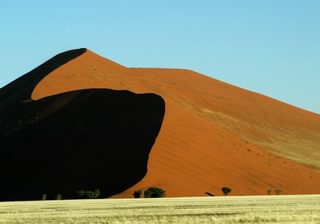
Adventurous safaris
Zimbabwe
If you are looking for an adventure and to truly disconnect then you can’t go wrong with Zimbabwe.
The world-famous Hwange National Park is one of the best places in Africa to see huge herds of elephants as well as to see Africa’s wild dogs. It is also home to the Big Five.
Mana Pools National Park which runs alongside the Zambezi river is probably one of the best places to experience a walking safari. It is the only park in Africa where visitors can go walking without a guide (although we would never recommend this).
The iconic Victoria Falls which are only a couple of hours drive from Hwange National Park make the perfect end to a visit to Zimbabwe.
Victoria Falls are one of the world’s most impressive waterfalls and are double the height of Niagara Falls. The most inspiring time to see them is when they are in peak flow which is usually between February and July.
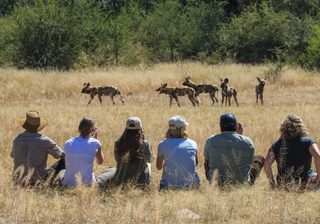
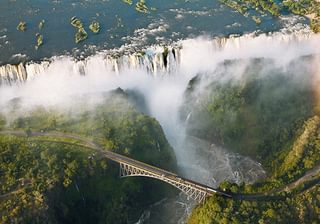
Gorilla Trekking
Rwanda
If you want to go Gorilla trekking to see the rare mountain gorillas and get face to face with an amazing Silverback male, then you’ll want to visit Uganda or Rwanda.
The main reason visitors flock here is to go gorilla trekking which works on a first-come permit basis that needs to be booked serval months in advance.
Whilst both are fantastic destinations, our top choice would be Rwanda for the quality of accommodation and ease with which you can combine it with another safari destination such as Kenya or Tanzania if you also want to see the Big Five.
Rwanda is a landlocked, compact country that is affectionately called the ‘Land of a Thousand Hills’. Its tropical climate means it is green all year round and whilst it is still known for the genocide, it is now a very peaceful country and one of the safest counties in Africa. Visiting the mountain gorillas is a true once in a lifetime and very memorable experience.
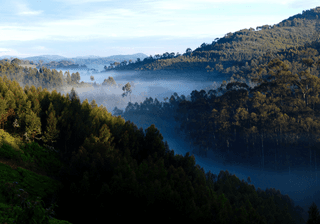
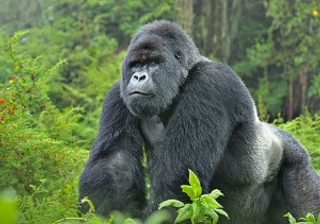
Outside Africa
Whilst the word safari might conjure up images of the vast plains of Africa, and it certainly is the top place to go on a traditional safari, if you are looking for Tiger you might want to consider visiting India and Sri Lanka offers some excellent opportunities to see leopards.
Both destinations have far more to offer than just a safari experience so are best combined with other elements too.
India
If you are looking to see a Bengal tiger in its natural habitat then we’d definitely recommend including a tier safari in India. There are few places in the world that these endangered animals can be seen and India is one of them.
Bandhavgarh National Park in Central India has the highest density of Bengal tigers and will provide you with a real India jungle experience.
An alternative popular choice is Ranthambore National Park which is located in the Rajasthan region making it an easy add on if you are doing a Golden Triangle trip. Whilst there are fewer Bengal Tigers here, there is still a good chance of seeing one.
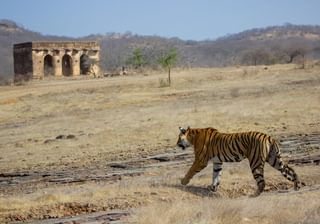
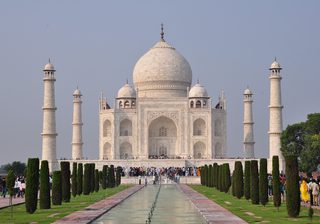
Sri Lanka
If you’re looking for variety then look no further than Sri Lanka – safari, temples, tea plantations, rain forest, beaches and delicious food, Sri Lanka has it all.
Whilst not a standalone safari destination, it is definitely worth incorporating into your trip as Sri Lanka has 26 national parks. Whilst you will see elephants throughout Sri Lanka, most people undertake a safari here in the hope of spotting an elusive leopard.
The most popular place to go on safari in Sri Lanka is Yala National Park which is the second largest park and only six hours from Colombo.
It has the highest sighting of leopards in Sri Lanka and some stats even show that Yala might have the highest density of leopards here in the world.
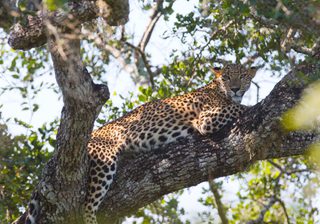
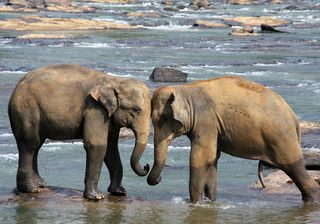
What are the Big Five?
One of the most popular things to see on safari and often requested by our clients, you might be surprised to learn that the term ‘big five’ derives from the colonial period when a safari involved hunting.
The term ‘Big Five’ was originally in reference to the five animals that were considered most dangerous and most difficult to hunt – there were lion, leopard, rhino, elephant and African buffalo.
As these were considered the most dangerous and challenging animals to hunt in the African bush, it was considered a feat by trophy hunters to bring them home.
Today's safari focuses on seeing and watching animals in their natural habitat rather than on hunting them, but many safaris goes still want to tick off the Big Five which are decreasing in number.
Of the big five, the two most challenging to see are often the Rhino and the Leopard.
There are two species of Rhino – white and black, although confusingly this has nothing to do with their colouring. Due to poaching for their horn’s populations have massively decreased and black rhino have been labelled as critically endangered making sighting of these much rarer.
Leopards are notoriously shy and very well camouflaged with their spots. They are solitary animals, hunting alone and often at night which makes them difficult to find. When they are spotted, it is often up a tree with their prey which they lug up with them.
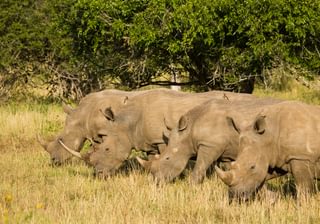
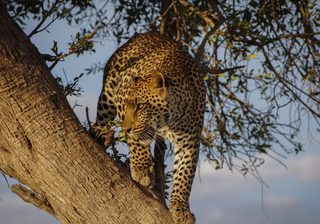
What is a typical day on safari like?
A typical day on safari will often start as dawn begins to break, where you’ll be roused with a warming drink before heading out on a game drive to go in search of the local wildlife.
The reason for such an early start is have the best opportunity to find active predators such as lions and leopards before they settle down to take shade from the heat of the day. Other animals are also more active at this time of day and with the beautiful golden light that comes with the new day, it makes for the perfect light for photography.
Early morning game drives usually last around three hours and you’ll either be back in your safari lodge or camp in time for breakfast, or you’ll be treated to a picnic breakfast served to you in the midst of the African wilderness.
During the heat of the day, you will usually have time to relax around your lodge, taking full advantage of the opportunity to unwind, disconnect from the busy world and take time to slow down and appreciate your surroundings. Many also use this as an opportunity for a quick nap after the early start!
Depending where you’re staying, your safari lodge may provide activities to keep you entertained during the middle of the day such as cultural trips to local villages or educational visits to understand how wildlife protection programs run in the local area.
For more information, learn more about family safari holidays
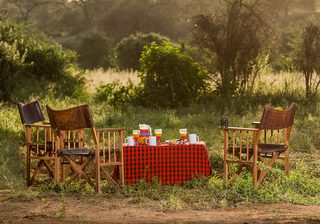
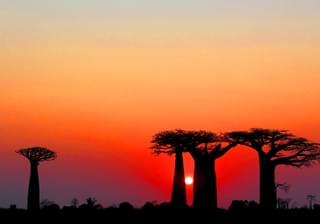
Before the sun starts to set, there will be opportunity to head out for a second game drive of the day. If you were lucky enough to find a pride of lions during a morning game drive, it’s unlikely they will have moved far during the course of the day so your local guide will take the opportunity to relocate the slumbering cats before they start to rouse and become active allowing you to spend more valuable time with these magnificent animals.
A safari isn’t just about the predators and Big Five, there’s a myriad of fascinating species to encounter. Africa is home to tremendous diversity, mammals, reptiles, birds, insects and plant species – the more you ask your local guide, the more animated they will become, sharing their passion and knowledge of the bush with you.
As the sun begins to set, you might be treated to a ‘sun-downer’ – the African tradition of finding a fantastic view, having a cold drink in your hand, watching a glorious sunset in the company of good friends and sharing great conversation.
After the sun has set and you’ve finished your gin and tonic, it’s time to head back to camp where dinner will be ready waiting for you. You’ll be astounded at what the lodge chefs can create considering the remote location of the lodge.
Depending on your safari camp, you’ll either can enjoy private dining or mingling with like minded adventurers to swap safari stories around informal tables. Some properties also offer bush dinners where by you’ll be whisked off to a location in the bush where a fire will already have been lit, a small bar and tables will have been prepared where you can enjoy a delicious dinner by candle light with the sounds of the bush surrounding you.
The early starts mean people tend to head to bed early, but before you, make sure you check out the stars - your remote location means light pollution will be at an absolute minimal so it will be a great time to do a little star-gazing or to sit around the fire sharing the day’s adventures before retiring to the comfort of your bed and falling to sleep with the sounds of the African bush surrounding you.
No two days on safari are the same, once you’ve experienced the thrill of seeing the immense size of your first wild elephant or hearing the soul reverberating roar of a lion you’ll soon be hooked and longing to return for yet another adventure.
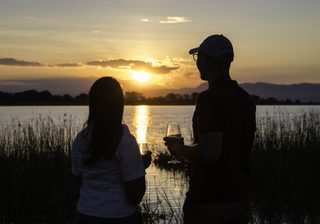
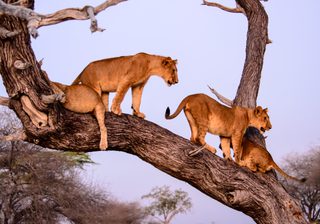
How long should I go on safari for?
The length of your safari can differ greatly depending on your experience and interest levels.
If you’re thinking of going on safari for the first time, a four-day safari can be a great introduction to dip your toe in the water.
If you’ve already been bitten by the safari bug, longer journeys into the wilds of Africa for a week or two, often staying at multiple lodges and reserves, would give you the opportunity to try a range of safari activities and exposure to diverse wildlife and landscapes.
What is safari accommodation like?
The options available are staggering from high end luxury to more basic camping.
Lodges
Safari lodges tend to be smaller and more intimate than hotels but are usually as a permanent construction and built from wood or stone, often with thatched roofs.
Bedrooms are likely to have ensuite bathrooms with running hot water and some might even have baths. They often have plenty of added extras similar to those you might get in a hotel such as a spa, swimming pools and even tennis courts or gyms.
Some lodges will have a fence around to prevent larger wild animals from entering and others will be unfenced requiring you to talk with security to go to a restaurant at night.
If you are a little bit nervous about sleeping in the bush or want a more pampered experience, this is the option for you.
Tented safari camps
A tented safari camp is very different from a tent you’d put up in your garden here and can be very luxurious. Many will transport you back in time with magnificent four poster beds, wicker chairs and beautiful rugs.
These are tents that are large enough to walk around in and often have wooden floors. Inside you’ll find a proper bed, electricity is likely solar powered, and many will have an ensuite bathroom with a bucket shower and toilet. Most tented safari camps will have a central tent that acts as a dining room and bar, and some even have swimming pools.
A tented safari camp allows you to sleep in luxury whilst hearing the sounds of the bush and in the morning seeing the footprints of the animals that have been through your camp in the night.
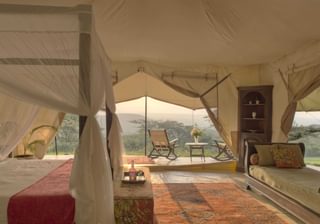
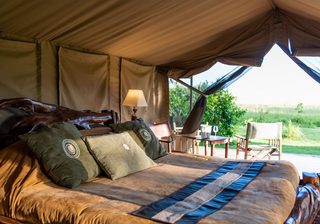
Seasonal Camps or Mobile Tented Camps
These are canvas tented camps that are set up for a specific event such as to see the migration. They will generally remain up for a few months and might be moved to follow that event.
These camps will still have comfortable furnishing such as beds and sofas, as well as bucket showers and flushing loos, and often a dining tent. It’s not high-end luxury, but perfectly comfortable and fantastic for wildlife viewing!
Mobile Walking Camps
These are set up for a night or two, often as part of a walking safari. Whilst these camps offer simpler accommodation, they also give you the chance to really experience the African wilderness. You’ll normally still get a proper bed, but meals might take place around a campfire and it is more likely to be camp chairs than a sofa.
With mobile safaris accessing the more remote areas, you can get a feeling of being truly in the wilderness and disconnected from the hustle and bustle of modern-day life.
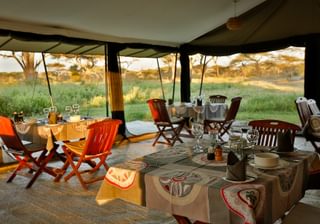
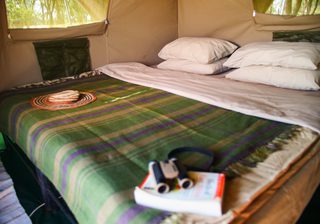
Fly camping
Fly camping is all about stripping it back to basics. Eat around a campfire and then sleep under a mosquito net staring up at the stars in the middle of the African bush. It is a truly magical and different experience. Don’t worry, they’ll be security with you and often bucket showers available.
Some hotels even offer luxury ‘star beds’ where you can sleep in the comfort of a treehouse.
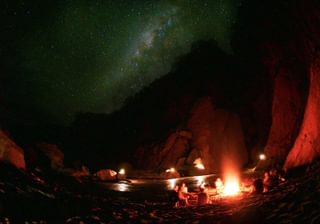
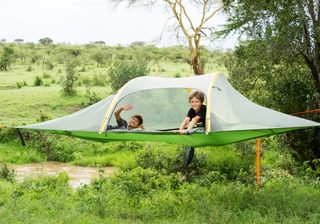
What types of safari are there?
The word safari literally translates as ‘to travel’ or ‘a journey’, so it is no surprise that the different types of safari are often based around how you travel. In one safari holiday you can often try many different types of safari.
Guided safaris
These are the most popular safari option and is often the image that comes to mind when someone thinks of a safari. A safari guide will take you out on game drives in a 4x4. These game drives usually happen early morning or late afternoon to maximise the chances of seeing animal activity.
Guided safaris can either be in a shared vehicle with others or taken privately depending on your budget. The advantage of a guided safari is that your guide will know the best locations to find animals, and will be able to tell you about their behaviour, as well as about the local vegetation.
Having a guide is a fantastic way to learn about the local culture as well as about the animals. Being on a guided safari also means that you are not focused on doing the driving yourself so you can relax and enjoy animal spotting.
Self-drive
An excellent way to travel through a country at your own pace, exploring points of interest and going to your own schedule, plus a brilliant way to make safari more affordable.
There is debate whether this is a good idea to self-drive when exploring game reserves as people may be inexperienced when it comes to how to handle any wildlife encounters that they come across and of course you’ll potentially miss out on getting a guide’s valuable knowledge. But as an option to follow your own schedule and path when travelling through a country, this can be an excellent alternative to flying.
A good destination to do a self-drive safari would be South Africa and head to game reserves such as the world-famous Kruger National Park and Hluhluwe Imfolozi, which is the second oldest game reserve in the world and stronghold for critically endangered rhino.
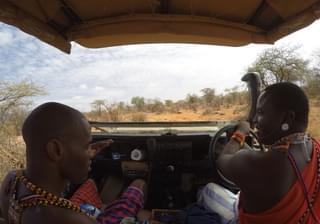
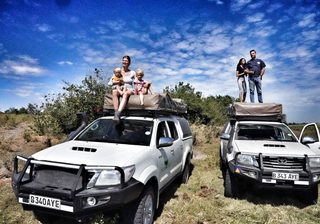
Walking safaris
Walking safaris are a fantastic way to experience the African wilderness – they allow for an appreciation of a lot of details which may be missed during a game drive.
On a walking safari your guide will teach you about the local fauna, you will look at the various animal tracks and signs to identify who has already taken your path. You will be amazed by how many animals you can see on foot and how your senses become heighted.
Walking safaris can vary from a couple of hours to stretching out over a period of a few days which are referred to as Wilderness Trails. Walking safaris occur under the supervision of a walking guide who should also be carrying a gun for protection (although very rarely used).
An experience is more focused on encountering nature in a more holistic way – meaning you will probably not have as much as a close encounter as you would in a vehicle-based safari.
Riding safaris
These are usually conducted on horse-back (although some lodges in Kenya also offer camel-back safaris) and give a very unique opportunity to experience African wildlife as it enables participants to get closer to some game.
For example, on horseback, you can get very close to giraffes as the giraffe sees the horse rather than the person sat atop of it – animals have a natural instinctive fear of humans and will normally be extremely cautious if they sense people.
A moderate level of proficiency is often needed to take part in a riding safari but depending on the region, wildlife and availability of horse temperament, even beginner riders may have the opportunity to take part. The cost of a riding safari, as with wilderness trails will depend on the length of the safari.
Some riding activities are offered as an alternative to vehicle based safaris for an afternoon and others can last a couple of days, with participants camping in the wilderness overnight at tented accommodation which has been set up by camp staff who will prepare ahead for the arrival of guests.
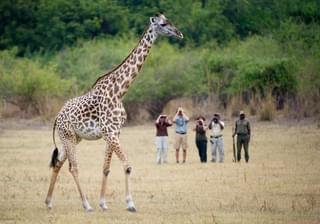
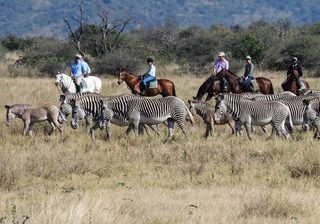
Canoeing safaris
If you are an adventurous safari goes, a canoeing safari offer a unique opportunity to see wildlife enjoying its everyday life. As you glide, near silently down the rivers in a canoe you can watch elephant and buffalo drinking on the banks of the river and navigate around hippos and crocodiles. It allows you to watch the African wildlife much more undisturbed than you would in a car.
The best spots for a canoeing safari is without question the Zambezi River.
Hot-air balloon safaris
A bucket list for many to travel over the African planes at sunrise in a hot air balloon. A hot air balloon safari gives you a unique viewing point to watch animals interacting on the ground whilst enjoying birds eye views.
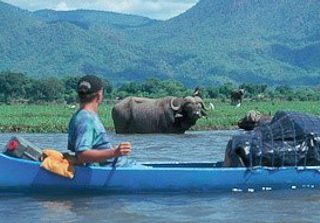
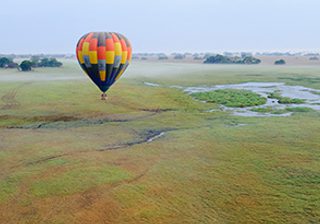
What is the difference between a National Park and a Private Conservancy?
National Parks
The National Parks and National reserves are maintained by the government. They are often areas that are viewed as outstanding natural areas or in need of protection. The government are responsible for maintaining the roads, controlling poaching, set the visiting house and managing security within the parks.
Visitors to the park must follow the set opening hours which means that you cannot for instance do night game drives and you must stay on the roads. This is beneficial for self-drive safaris as you are following generally well-maintained roads with other cars, but it also means that if you see an animal off the road you cannot get closer to it. National Parks tend to be busier than private conservancies and you can even find yourself in ‘traffic jams’ or potentially with 20 other vehicles jostling to see a lion.
Private Conservancies or private reserves
Private conservancies are privately managed and often have a large focus on conservation. Private conservancies offer a more exclusive safari experience as only the lodges within that conservancy are allowed in it, meaning that you can escape the crowds and get a more intimate wildlife viewing experience.
As private conservancies are managed privately, they set their own rules whilst still prioritising the ecology and wildlife. This can mean going ‘off-road’ for special sightings and following predators on the hunt as they cruise through the bush.
Most conservancies will have rules around the maximum number of vehicles allowed near the animals at any one time so that the animals will not get stressed and disappear. This means you will not be sat with lots of other vehicles and are likely to get a better view of the animals, but it also might mean you have to patiently wait your turn if there are already vehicles there.
Many conservancies also allow night drives or walking safaris which are often are not allowed in the National Parks.
Some conservancies have had huge success in conservation and have managed to dramatically reduce poaching and increase the numbers of endangered species. For example, Lewa in Kenya has had a lot of success increasing Rhino numbers.
One disadvantage of a conservancy is that if you are looking to self-drive this will not be allowed.
How much does safari cost?
The location, time of year, duration, activities and level of accommodation will all affect the cost of a safari. Safaris can range hugely in price but here are some things to consider:
- The more privacy and exclusivity you want, the more of a premium you are likely to pay. This goes both for the park you are staying and if you are sharing a vehicle.
- Organizing a trip, yourself doesn’t necessarily save you money. At Far & Wild, we make our money because we have a special trade rate with our suppliers not because we charge you more or for our time. Our price promise means you never pay more than booking direct.
- If you are looking to reduce costs consider going out of season – it is the same animals that are grazing on the plains, you might just have slightly more unpredictable weather. If you are going with a guide they will still know where to find the animals.
- Countries with favourable exchange rates often work out cheaper – for instance South Africa currently offers great value.
- How you travel between destinations will affect your costs – for instance it can be cheaper to go by land rather than on a small safari plane.
- Self-drive can be a good way to reduce the cost of safari
- Group trips are a good way to make a safari more affordable - perhaps get a group of friends together and think about what you’d all like to see and make something you will all enjoy.
Below are a few trip ideas to give you an idea on pricing:
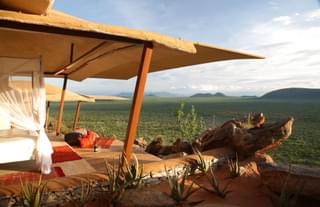
Great Value Safari & Beach
For a safari and beach break that allows you to relax and unwind away from the masses look no further.
11 nights from £2,450pp (excluding international flights)
Spend one night in Nairobi to recover from your flight, you'll then fly to the Mara North in a small plane, where you'll stay in the beautiful Saruni Mara Camp. A remote camp off the beaten track in the Mara North Conservancy, perfect for relaxing whilst having an unforgettable wildlife experience.
After three nights on safari, fly to the beach for a seven night stay in the family run Diani Blue Guesthouse. Positioned right on the pristine Diani beach, this small, boutique resort is the perfect beach escape.
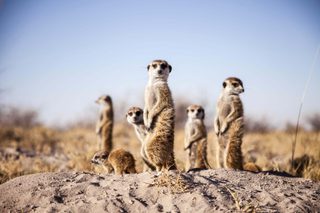
Active Botswana with Victoria Falls
Perfect for safari goers who want to stretch their legs - walk with the Zu’ bushmen, see the Meerkats and canoe in morkoros through the Okavango Delta. Finish at the awe-inspiring Victoria Falls.
11 days from £4,947pp (excluding international flights)
Begin your trip by flying into the Makgadikgadi Pans national park for a 3 nights in Camp Kalahari. This semi-arid desert environment has an incredible diversity of wildlife including the famous Meerkats. From here fly to Khwai, one of the best game viewing areas Africa has to offer and stay in the gorgeous Khwai Tented Camp.
As well as walking and canoeing, here you can see wild dog, lion and leopard, as well as many elephant. To finish of you trip fly north west to Victoria falls in Zimbabwe for 3 nights at Victoria Fall Hotel.
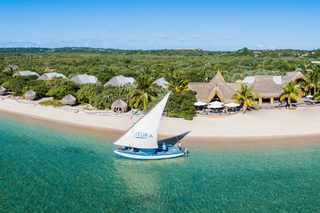
Luxury Kruger and Mauritius
Combine two of Africa's most iconic experiences - the amazing wildlife of the Sabi Sand and idyllic beaches of Benguerra Island, all in complete luxury.
11 days from £8,345pp including all flights and helicopter transfer.
Spend four nightsin the world-renowned Sabi Sand Wildtuin, one of the best game viewing areas in all of Africa, staying at the gorgeous Chitwa Chitwa lodge. Enjoy the amazing game viewing opportunities with the chance to see the Big Five and of course, time to relax in your stunning lodge.
Once your safari is over you will be transferred to the gorgeous Benguerra Island, a paradise of soft beaches, warm seas and gentle breezes. Here you can truly relax in the comfort of your villa and private pool, stroll along the beach and swim in the warm waters of the Indian Ocean or enjoy the range of amazing activities on offer from the lodge.
Is travelling to Africa safe?
The answer is generally yes, it is. As with anywhere in the world, you need to take certain precautions but travelling to the vast majority of Africa is safe. If you are booking with a tour operator, they will follow FCO advice and only arrange trips to areas that are safe.
One piece of advice we would always give is to make sure you are up to date with the relevant inoculations and when you do travel, always make sure that you have the appropriate medication and in good supply as these could be very difficult to get hold of once you are out of the major towns and cities.
Can I talk to a safari expert?
Of course! You can do all the reading the world, but nothing compares to talking to an expert whose been on multiple safaris themselves or worked as a safari guide,
Far & Wild specialise in safaris - we create tailor-made experiences to give you the opportunity to make your dream journeys come to life. Our specialists have in-depth and intimate knowledge of destinations throughout Africa and the Indian sub-continent.































